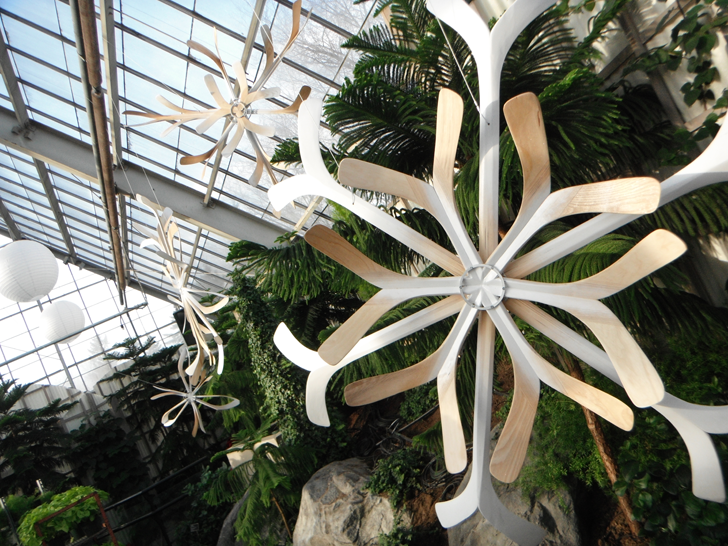The selection of materials for my upcycling project turned out to be the driving force behind the selection of my aesthetic. I have chosen to use recycled hockey sticks as the material to create a planter for house plants. Because I will be using wooden hockey sticks whose shafts have fairly simple geometry, I believe that using this material will fit well into the Scandinavian aesthetic. Conveniently, Scandinavian countries are well known for their ice hockey prowess so I felt that it was fitting to use hockey sticks to achieve a Scandinavian aesthetic. Overall, Scandinavian interior design focuses on using natural materials, such as wood, and light colors to create minimalist and modern interior designs. To further comply with the Scandinavian aesthetic, I believe that the use of succulents and cacti’ will be an elegant selection of fauna for this project. Natural materials often lead to the use of neutral tones in these spaces to create an inviting environment. The simplicity and Scandinavian influence of this style will play into utilizing the straightforward geometry of hockey sticks (1).
 7 Scandinavian Design Principles and How to Use Them, Invaluable (2)
7 Scandinavian Design Principles and How to Use Them, Invaluable (2)
I plan to lay out the planter in a hexagon shape where the hockey stick shafts will be stacked on each other, taking influence from the simple and geometric shapes used in the Scandinavian style. Three or four layers of sticks will have to be stacked on top of each other to create the depth needed for this planter. To achieve a clean and organic finish to the piece, wood adhesives will be necessary to mitigate the need for any fasteners. Adding any nails or screws would detract from the seamless, natural finish of the wood and would shy away from the simplicity of Scandinavian design. Of course, this means that the wood will need to be cut and clamped properly to ensure the integrity of the design before finishing with sanding and linseed oil. I also found inspiration from the artistic style of cubism through its use of geometric shapes and dark, neutral tones that reflect the color of the woods used in old hockey sticks. However, most hockey sticks come painted with graphics and logos. Admittedly, this does not reflect the aesthetic I am aiming for in this project. Hockey sticks have often been used to create furniture and other consumer products but their color schemes do not fit into the Scandinavian Aesthetic.

Hockey Stick Adirondack Chair (3)
To remedy this conflict, the hockey sticks can be sanded down to remove the paint used and reveal the wood underneath. By exposing the birch wood, the natural tones and color of the sticks can be seen and provide a more pleasant appearance to be used for an interior planter. The Montreal Botanical Gardens recently installed an exhibit of recycled hockey sticks in their gardens using this approach (4). This exhibit displays the integration of hockey sticks in a natural setting reminiscent of the Scandinavian style.

Stephen Lindsay Schtick Snowflake Collection (4)
Stephen Lindsay’s snowflake sculptures were a great source of inspiration for me as I was seeking to create a more elegant aesthetic from the use of hockey sticks. From the image above we can see that the sticks have had all logos removed and have either been painted white or left with their natural wooden tones. With their elegant simplicity and light colors, these sculptures are reminiscent of the Scandinavian style and provide an excellent model for me to base my design off of. I hope to incorporate these simple, organic elements to create a household planter from recycled materials that will now be repurposed to allow plants to flourish in an urban setting.
Sources:
- https://www.thespruce.com/what-is-scandinavian-design-4149404
- https://www.invaluable.com/blog/scandinavian-design/
- https://www.custommade.com/blog/for-the-hockey-fan-custom-furniture-and-accessories-made-from-reclaimed-sticks-pucks-and-shirts/
- https://inhabitat.com/recycled-hockey-sticks-transformed-into-incredible-snowflakes-at-the-montreal-botanic-gardens/


4 Comments. Leave new
Hey Ian,
This is a great project, and it’s clear that you’ve put a lot of thought into it. Right as I was wondering if you would try to strip the paint I read on to find you had already concluded that you would need to do that to match your aesthetic. I think working the curve of the stick into your design would be great, similar to your fourth image. Also, I was not aware that hockey sticks were made of birch, seems like a very beautiful material choice for your aesthetic. I look forward to seeing this come to fruition, I do wonder if you have a specific plant in mind and if you plan on bringing it along for the expo.
Thanks for the response, Noah! I agree that incorporating the curve of the stick will be interesting and a challenge. I have not figured out how I can use the stick blades yet but I hope to incorporate them in some way. I think that the plants I will use will be succulents or cacti of some sort. Small succulents are commonly used in Scandinavian settings so I think they will suit the project.
Hey Ian! I like this design idea, this project seems fun and the aesthetic itself is compelling. I think the sharp contrast between the original colors and logos on the hockey sticks with their planned final state will be interesting and will show the upcycling aspect of this project really well. Moving into the construction of the planter, how many layers of the hockey stick are you planning on using overall, do you have any general dimensions of the project thus far?
Hi Trent! I agree that it will be interesting to see the paint stripped away from the hockey sticks to reveal their natural colors. On the topic of dimensions, I have three old sticks to use and I need to determine how much material I have to use before making the final dimensions. I believe the planter will have 3 to 4 stick shafts stacked on top of each other to create the depth that will be needed.